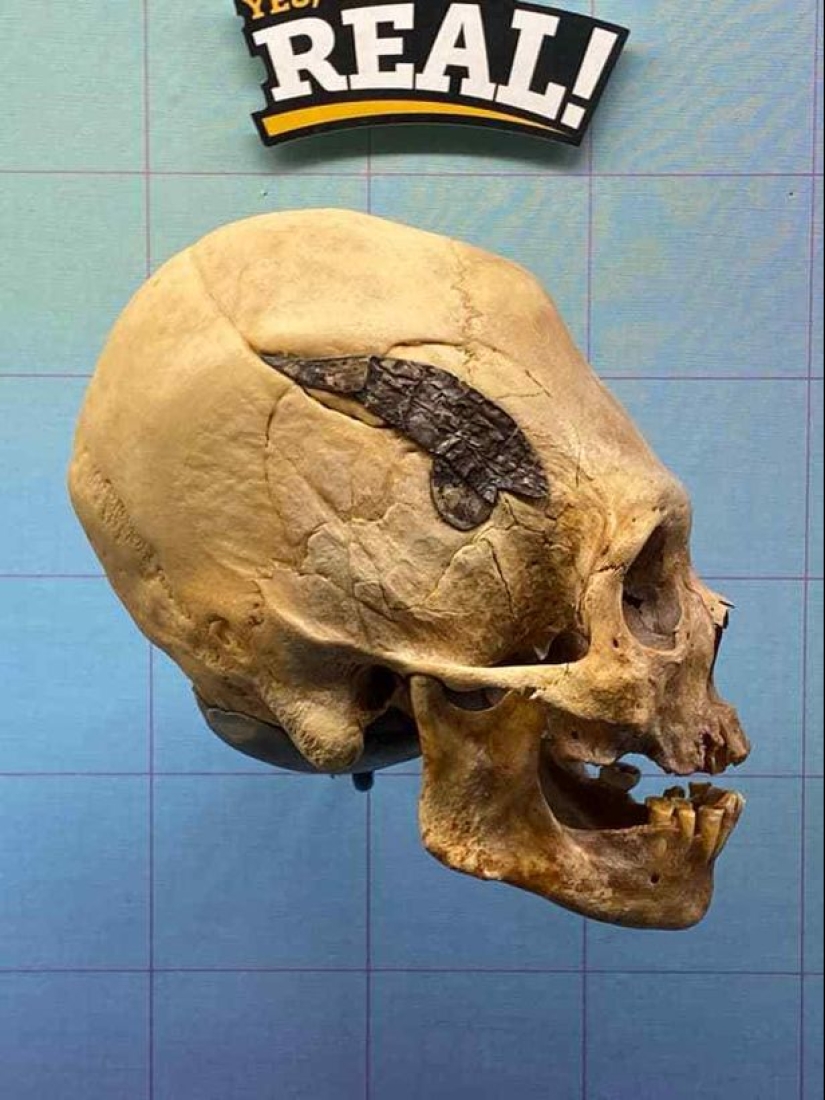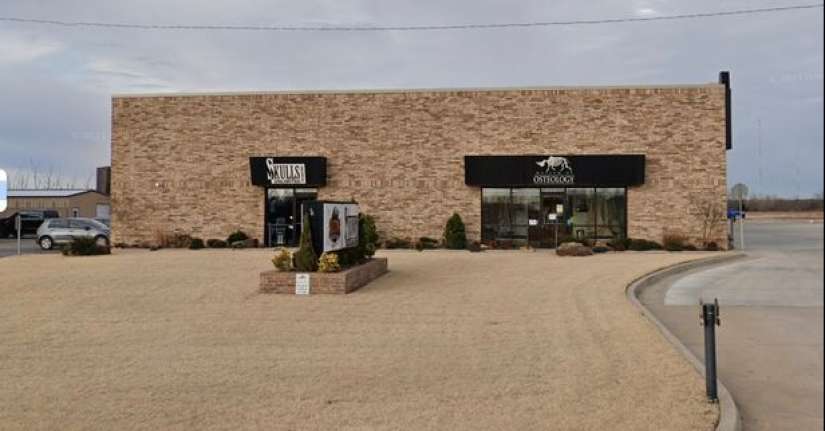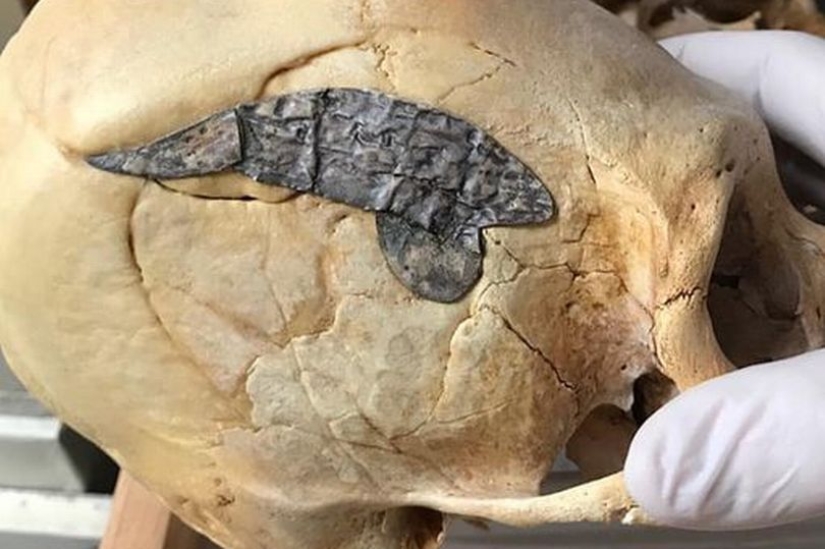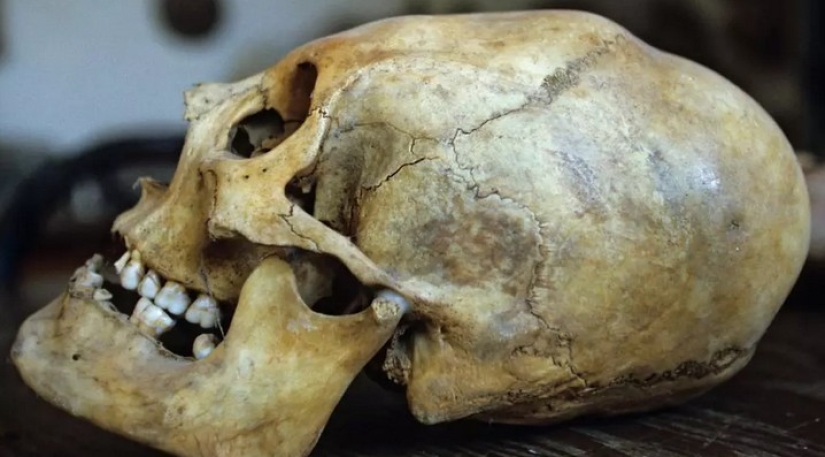A human skull bonded with metal 2000 years ago amazed scientists
Categories: Health and Medicine | History
By Pictolic https://pictolic.com/article/a-human-skull-bonded-with-metal-2000-years-ago-amazed-scientists.htmlThe fact that ancient surgeons were able to perform quite complex operations has been known for a long time. But despite this, the skull of a Peruvian warrior who lived 2,000 years ago is amazing. An unknown Indian surgeon fastened the parts of the shattered skull with metal, and the patient survived!

One of the exhibits of the famous Museum of Bones in Oklahoma, USA (Museum of Osteology) invariably attracts the attention of visitors. This is an unusually shaped elongated human skull with a metal patch just above the right temple. The metal holds together the fragments of bone, covering a large gap caused by some crushing weapon.

Scientists believe that the Peruvian warrior participated in the battle and was wounded in the head. The injury was so serious that even today surgeons would not give such a patient any guarantees. But a certain skilled Indian healer performed a brilliant operation, fastening the parts of the skull with metal. Bone analysis showed that after the intervention, the man lived for several more years.
It is unknown how the patient felt after such an operation. Has he returned to a full life or has he remained disabled? There is another mystery in this ancient history. The metal alloy from which the bone-binding plate is made could not be identified.

One of the researchers at the Museum of Osteology said this about this:
In fact, operations using plates made of precious metals were performed by the ancient inhabitants of America. However, they were not so serious and, alas, did not always end well. At the same time, a skilled surgeon "repaired" the skull after a fatal injury using a technology unknown to science.

This is what the scientist who examined the Peruvian warrior's skull, Professor John Verano from Tulane University, said about the skull. According to the anthropologist, skull fractures were common injuries in combat. The weapons of the Indians were mainly stones for slings and clubs. Therefore, Peruvian surgeons have become experts in the treatment of such injuries.
Dr. Verano is considered one of the most authoritative experts in the field of surgery of the Indians of South America. He wrote a whole book about the treatment of skull injuries by ancient surgeons: "Holes in the Head: the Art and archaeology of trepanation in Ancient Peru."

The scientist also studied the shape of the skulls of ancient Peruvians. The elongated skull, like that of a warrior with a plate, was a sign of a high-born person. Babies from aristocratic families were tightly swaddled after birth to lengthen their heads. It is quite possible that it was the nobility of the patient that forced the doctor to show such unheard-of skill in the treatment of a fracture.
In Peru, archaeologists make many amazing and terrible discoveries. For example, recently traces of mass ritual murder of children were found there.
Recent articles

If it seems to you that the New Year holidays are being celebrated somehow incorrectly, then you definitely haven't seen these ...

While the sun practically disappeared from the sky above the Arctic Circle and the night seemed endless, the Vikings prepared to ...

Sometimes reality presents us with amazing coincidences. Objects blend perfectly into the background, animals become invisible in ...